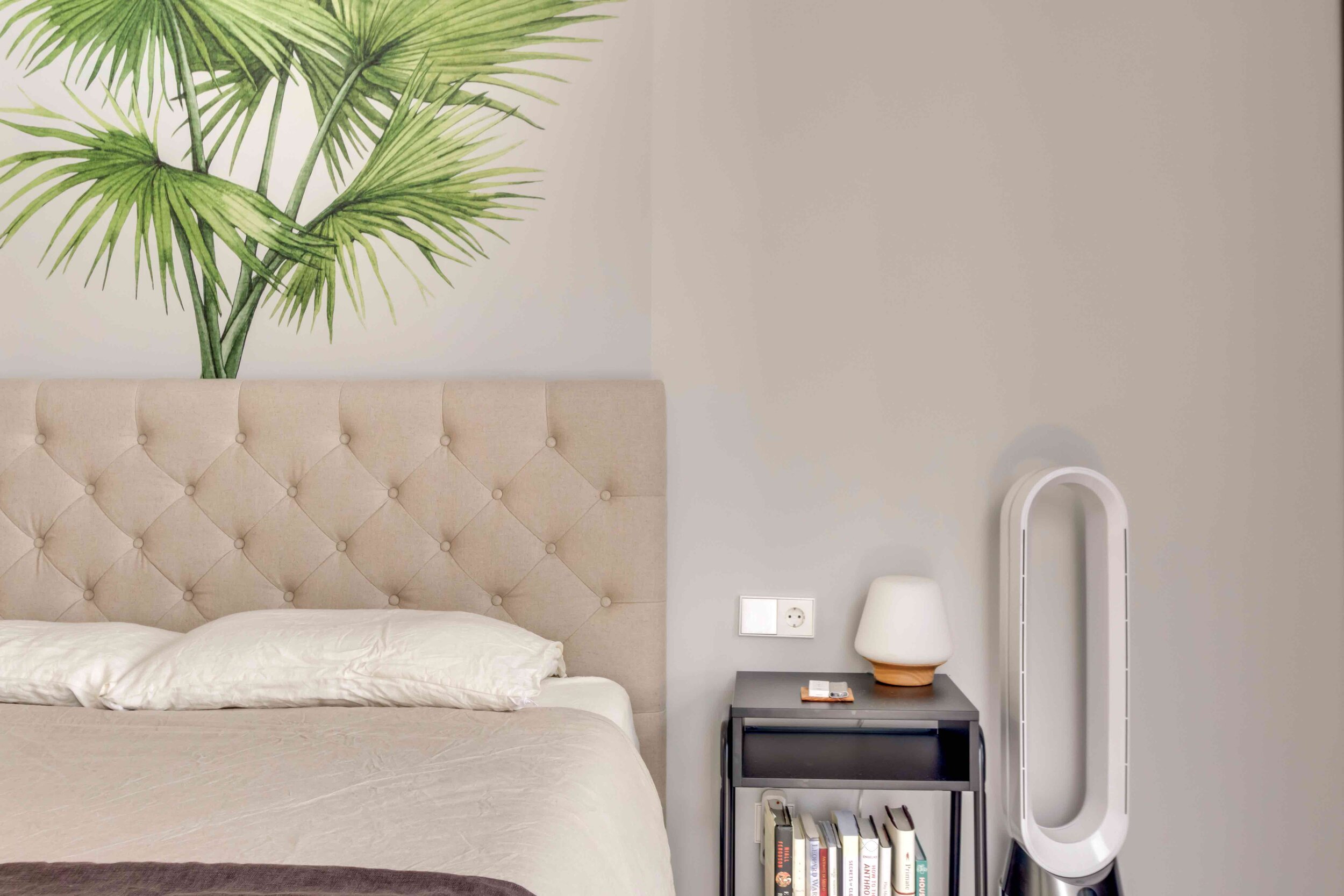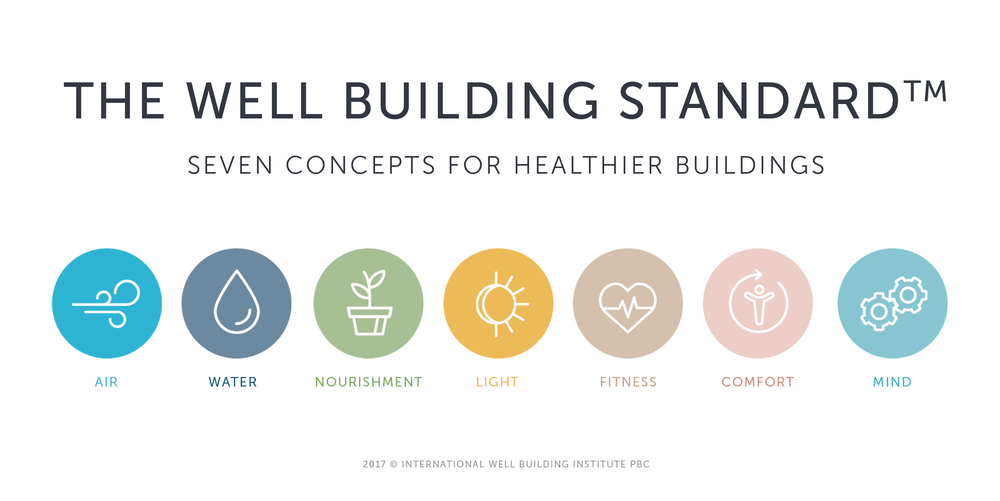All you need to know about Indoor Air Quality (IAQ)
Our guide to the role of indoor air quality (IAQ) in creating healthy buildings and wellness real estate

Dyson indoor air purifier in the bedroom of Casa Biofilico, our residential project in Barcelona, Spain
What indoor pollutants affect indoor air quality (IAQ)?
Indoor pollutants such as CO2 have a negative impact on cognitive function and performance. the best solution is source control - nipping the problem in the bud, by not bringing harmful materials into the space that carry chemicals, VOCs or off-gases.
For that, we need building materials and fit-out materials that disclose their chemical ingredients, ideally with a healthy product accreditation to back up their claims.
One of the main culprits in this sense are Volatile Organic Compounds (VOCs) or chemicals that off-gas at ambient temperature from building materials such as particle board, glues, paints and carpet backing
Particulate Matter PM2.5 and PM10 are made up of dust and synthetic materials decomposing around us from furniture, fabrics and so on.
How do green healthy buildings improve indoor air quality?
Green healthy buildings have been shown to have a positive impact on cognitive scores, even a 10% increase in productivity in an office or workplace can pay potentially for or greatly offset a business’s rental costs.
What’s more, health & safety are often the main criteria in building satisfaction for occupants. Deliver a healthy building with high quality indoor air and you add value to the property in other words.
Primarily this is done through a combination of adequate ventilation adapted to the specific location of each project and consideration for the building materials used during construction and materials used in the fit-out.
how to positive impact indoor air quality?
Natural ventilation and high-grade HVAC filters on one side combined with a green procurement policy that specifies healthy, non-toxic materials that do not give off harmful VOCs on the other is the key.
We also advocate for an abundance of air-purifying indoor plants and sufficient numbers of air quality monitors wall-mounted at around head height to ensure we can control and monitor the situation in real time post-occupancy.
We then layer in various facilities management strategies such as enhanced cleaning protocols, green cleaning policies, walk-off mats and so on to ensure the indoor air quality is maintained over time,.
What standards exist for indoor air quality?
RESET AIR focuses specifically on this one theme, whereas other standards such as WELL have a dedicated chapter to indoor air quality. Broadly their content is aligned, combining information about the risks of getting it wrong with strategies for getting indoor air quality right.
A conversation with Wayward Plants Associate Director Tom Kendall covering their work creating biophilic public benches, large scale plant donations as an ethical business practice, designing botanically inspired playgrounds, a botanical memorial for nelson mandela in liverpool and their nature-inspired sustainable interior concept for a stella mccartney retail store in london
What are the health risks of toxic building materials and products in interiors? Biofilico healthy building consultants answer this and more - covering Red Lists, the sources of toxins in interiors, healthy building standard guidance on avoiding toxic materials as well as links to our healthy building materials guide. Read on for more info!
Facilities Management teams play a key role in delivering on a building's performance promises in terms of air quality, water efficiency, energy efficiency, thermal comfort and occupant wellbeing. Here we explore this topic from our perspective as Biofilico healthy building consultants.
Talking smart buildings for improved air quality, energy saving and carbon capture with innovative software company CEO Sally R and Matt Morley of Biofilico for the Green & Healthy Places podcast on wellbeing and sustainability in real estate.
There has never been a more urgent time to consider an enhanced ventilation strategy as part of a healthy indoor environment. Why does this ventilation matter and what can landlords, developers and workplaces do about it?
Nurseries, schools and universities can leverage healthy building strategies to facilitate learning - here we cover the role of biophilic design, healthy materials, indoor air quality, light and restorative spaces
indoor air quality / air purification / air ventilation / well building standard / healthy building / wellness interior / air quality monitors (kaiterra)Biophilic design in the context of green building and healthy building standards. How does biophilia relate to and combine elements of wellbeing and sustainability?
Our thoughts on the future of workplace wellbeing, from biophilia, active design, lighting strategies and indoor air quality as part of an enhanced indoor environmental quality plan.
A guide to the RESET Air standard’s various statuses and what they mean for certification for a smart building, healthy building or green building project.
How to respond to the well community: AIR / Fundamental Air Quality Precondition and its available features.
Our introduction to the RESET Air healthy building standard and certification process, from a consultant’s perspective.
Referencing a seminal study, we explore how biophilic nature gyms have higher air quality standards than normal gyms, making them healthier, happier places.
How to select the right species and add to an interior design concept with plants for a healthy, biophilic interior.
Our top five tips for improving the air quality in your home, office or gym by combing biophilic design and healthy design principles.




















